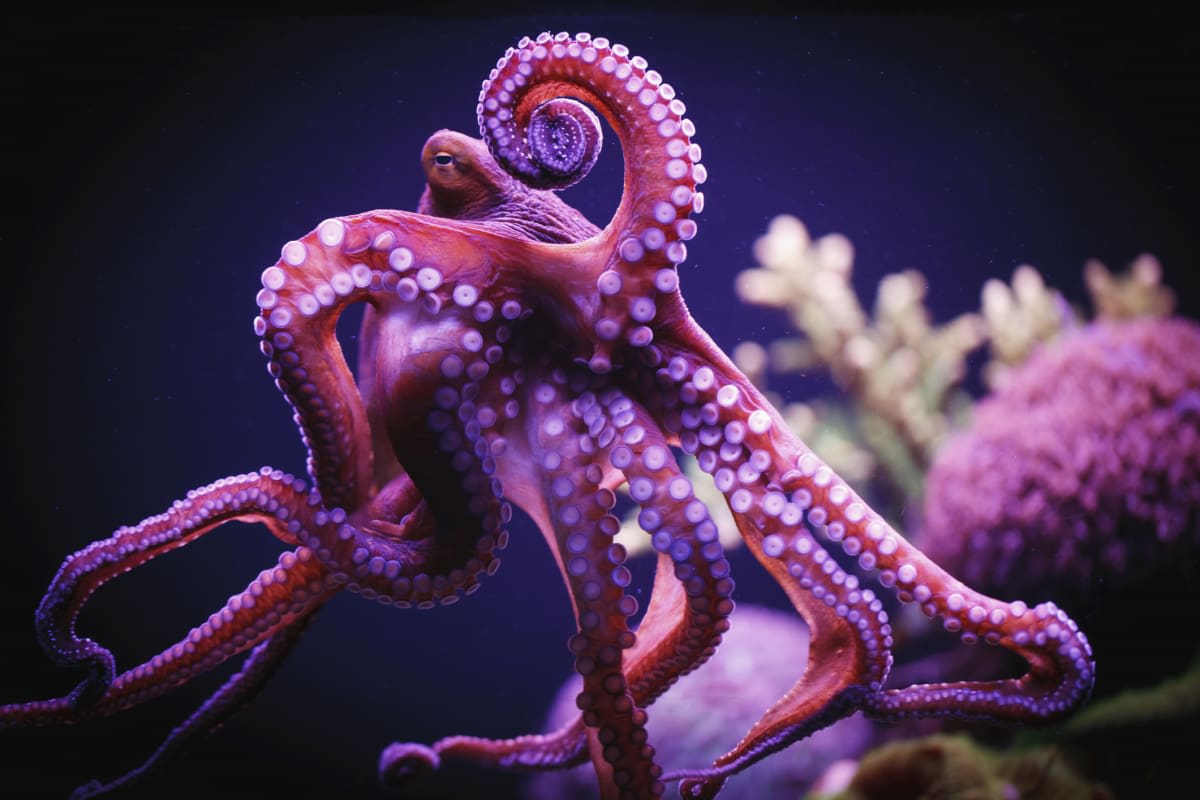Researchers Spot Thousands of Octopuses Balled Up Near Deep Sea Volcano off the Californian Coast

In the dark, ambient waters two miles off the coast of California, beyond the carpets of sea sponges, pink sea lilies, and ghostly white crabs, you might spot thousands of squishy, pearl-like gems scattered and clustered on the foothills of a giant underwater mountain. They look like grapefruit-sized balls, but they are actually octopus mothers rolled into defensive positions to protect their eggs. In some places, males and females are engaged in mating behaviors. Welcome to “Octopus Garden.”

At 10,500 feet deep, this is a secret retreat where these eight-legged couples come to nest, mate, and die. If there were a dozen octopuses engaged in these behaviors, it wouldn’t be surprising. But when researchers punctuated this seafloor with cameras, their control room erupted with excitement when they saw over 6,000 octopuses indulging in mating and hatching eggs, according to a study published in the journal Science Advances.

The mystery of this consortium of mischievous octopuses didn’t come to attention unless the researchers at the Monterey Bay Aquarium Research Institute (MBARI) shifted their focus to the cliff edges of the Davidson Seamount. This seamount features a peculiar geology that is carved by the marriage of cold seawater and the scorching hot springs oozing from the volcanic vents. The boundary between these cold waters and hot vents creates a shimmery mirage that acts like a wall that camouflages these pearly octopuses as they rest, mate, and die.
Seeping from the crevices and the ridge crests, the volcanic vents belch plumes of steaming hot water that spill and intermix with the cold waters, materializing this shimmery mirage. First discovered in 2018, the “Octopus Garden” is one of the largest known tangles of octopuses on the planet, according to the paper. When MBARI researchers deployed a remotely operated deep-diving robot in this underwater mountain, they observed that these octopuses arrive here every season. The couple mated, and when the eggs hatched, the mothers lay upon the babies, protecting them and swatting away the predators.
Since octopuses die after giving birth, their carcasses often become the food source for close-dwelling fish, sea anemones, and squid. These animals drag the carcasses to their dens and chew them for nutrients. There’s another reason researchers found why these octopuses chose this particular location for their reproductive activities. The reason they discovered was its optimal temperature. Cold water cannot aid their reproduction as much as a mixture of cold and hot water. They employed temperature probes to find that the water bathing their eggs showed a temperature range between 5 degrees Celsius to 10 degrees Celsius. The mild temperature of these waters allowed the mothers to hatch their eggs much quicker than if they had been in the colder waters.
The warmth of these waters mainly stemmed from the hydrothermal vents, also called “black smokers,” that snaked out from the ridge flank where water percolates from the Earth’s fiery hot mantle. And as it travels towards the seafloor, it picks up heat on the way. “It never gets super-hot [enough] to cook the eggs of an octopus,” Doctor Jim Barry from MBARI, who led the study, shared with The Guardian. In a press release, researchers revealed that these pearl octopus babies usually take five to eight years to pop out of their cosy eggs. But the warm temperature of these waters whittled down the hatching time to less than two years.
More on Green Matters
Stunning Clip Captures an Octopus Changing Colors While Dreaming in a Way We’ve Never Seen Before
Incredible Video Shows Scientists Coming Across Two Underwater Cities Built by Octopuses
Scientists Were Stunned To Spot a Transparent ‘Glass Octopus’ Under the Pacific Ocean